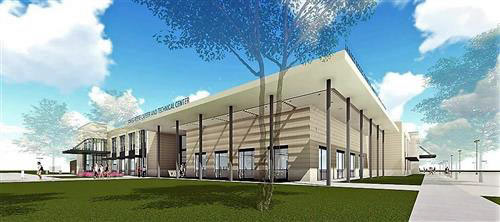SUGAR LAND EXPERIMENTS WITH FLASHING YELLOW ARROWS Coming soon: the greater Houston area’s first-ever flashing yellow arrow left-turn traffic lights, in 5 signals around the Sugar Land Business Park near West Airport Blvd. and Dairy Ashford! Will you know how to handle them? “The flashing yellow ‘instinctively implies caution,’ which is the preferred reaction when drivers make judgment calls about turning left into a gap in traffic, said city officials. . . . When approaching the intersection, a solid red arrow indicates a required stop – left turning drivers must stop. Drivers must also stop at a solid yellow arrow. A flashing yellow arrow requires motorists to first yield to oncoming traffic and pedestrians before proceeding to turn left. A solid green arrow permits drivers to turn left while oncoming traffic stops. . . . ‘We’ve targeted these initial intersections as part of a phased approach intended to allow residents to become familiar with FYAs [flashing yellow arrows] before utilizing the lights in more densely travelled areas,’ said Assistant Public Works Director David Worley. ‘Our selection of the Business Park will give us the opportunity to refine the timing and ensure education of our motorists.’ Following a six-month study period, the FYAs will be considered for implementation along Eldridge Road, a major north-south corridor through Sugar Land. In addition, a policy will be developed that specifies a process for selection of future intersections.” [Fort Bend Now]




I’d be extra-careful to fasten my seat belt.
How is this different from a solid green light? One of the many things about Houston traffic that pisses me off is the non-green arrow to begin with. What makes that intersection more dangerous than the last block that warrants a “you cannot legally turn left here” arrow?
Just yield to oncoming traffic and turn left whenever it’s safe.
Why must you be told how to perform the simplest of tasks?
It seems that if drivers are in a hurry, problems would happen with any color light. It isn’t that drivers don’t already know perfectly well what they should do; it’s that it has become routine and they are only driving with half their brain.
So perhaps something to remind drivers to pay proper attention could be handy as long as the effect isn’t simply a temporary one due to novelty. But I dislike using flashing lights for it. If steady yellow and flashing yellow mean different things, you can’t tell at a glance which it is. Also, flashing lights are themselves distracting.
I see it adding confusion, not clarity. And people freaking out and slamming on their brakes when they don’t need to.
File under “Things sure to go wrong”
“Drivers must also stop at a solid yellow arrow.”
Doesn’t this conflict with what the Texas Drivers Handbook (published by the Texas Department of Public Safety) states with regard to solid yellow lights?
Once again a bunch of traffic engineers think the driving public is so ignorant that , like Dimitri said, we cannot make the simplest decisions on our own. If we must throw away tax money to someone in cahoots with the public works departments, why not just use the countdown numbers that are used in crosswalks? I, too, find it asinine that
there is no consistency here in deciding which intersections require a turn on left only signal.
One of the Dallas suburbs has these, I can’t stand them.
I’ve always assumed that some intersections have red arrows because visibility is limited in some way, or they are simply so busy and large that it’s difficult for people to judge whether it’s safe to turn. The one with arrows I drive through most frequently (Houston & Washington) is like this. Given Houston drivers’ penchant for just turning regardless of what else is going on, it’s not such a bad thing. (That one is also a busy enough intersection that at some times of day, you’re likely have people starting left turns into back-up streets which they can’t complete, since “don’t block the box” seems to be a foreign concept here.)
The yellow arrow tells you to do what you’re supposed to be doing anywhere, and therefore is just visual clutter.
(For an interesting take of this read the section of “Traffic” about British roads, which have far fewer signs than ours, and also fewer collisions despite being generally more crowded. There is such a thing as too much information while you’re trying to complete what should be a high-concentration task like driving.)
I don’t see this turning out so well, either. Anecdotally — I often observe folks refusing to obey left-turn yields with a regular green light and plowing in to oncoming traffic but who knows, maybe this will be the turning point (har!)